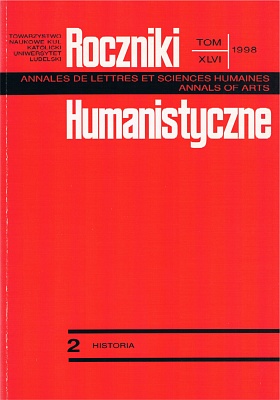Kościół katolicki w dziejach Polski w podręcznikach historii dla szkół podstawowych i średnich w latach 1944-1956
Abstrakt
During the first five postwar years the modified pre-war curricula were used to teach history: for secondary schools the books of 1937 and for primary schools of the third degree. From the school year 1949/50 onward history instruction was supposed to be conducted in accord with the methods of historical materialism. The forming of the Marxist world-view turned into criticism of the religious world-view.
From the end of the Second World War to the end of the school year of 1955/56 more than 25 history course books were in use in Polish schools. Taking into consideration all their successive editions they amounted to one hundred. The course books depicted the following events from the history of the Church: the introduction and strengthening of Christianity; life in monasteries, culture, science and art; the Church during the unification of Poland brought about by Władysław Łokietek; the work of Mikołaj Kopernik with regard to the Renaissance in Poland; the Reformation and Counter-reformation in Poland; the Church during the collapse of the Polish Republic and the attempts of its restoration; the Church in the struggle for the Polish character of Greater Poland, Silesia and Galicia in the 19th century and in the beginning of the 20th century.
The place and role of the Church in the history of Poland has undergone evolution from a decidedly kind rendition (in the course book by J. Dąbrowski) to an unfavourable, or even hostile, presentation (in the course book by Ż. Kormanowa). In the years of 1948-1949, during the so-called ideological assault, the manner of interpreting the place and role of the Church in the history of Poland was changed. Then to show the Church in a bad light was an instrument conceived to support the forming of a Marxist world-view as an antithesis to the religious world-view. The anti-Church emphasis in history instruction, of both Poland and of the world, was a component of the policy aimed against the Catholic Church in education. An expression of such a policy, both in course books and in everyday life, was an attempt to divide the clergy into progressive, especially the lower clergy, and the "reactionary" hierarchy.
Copyright (c) 1998 Roczniki Humanistyczne

Utwór dostępny jest na licencji Creative Commons Uznanie autorstwa – Użycie niekomercyjne – Bez utworów zależnych 4.0 Międzynarodowe.





